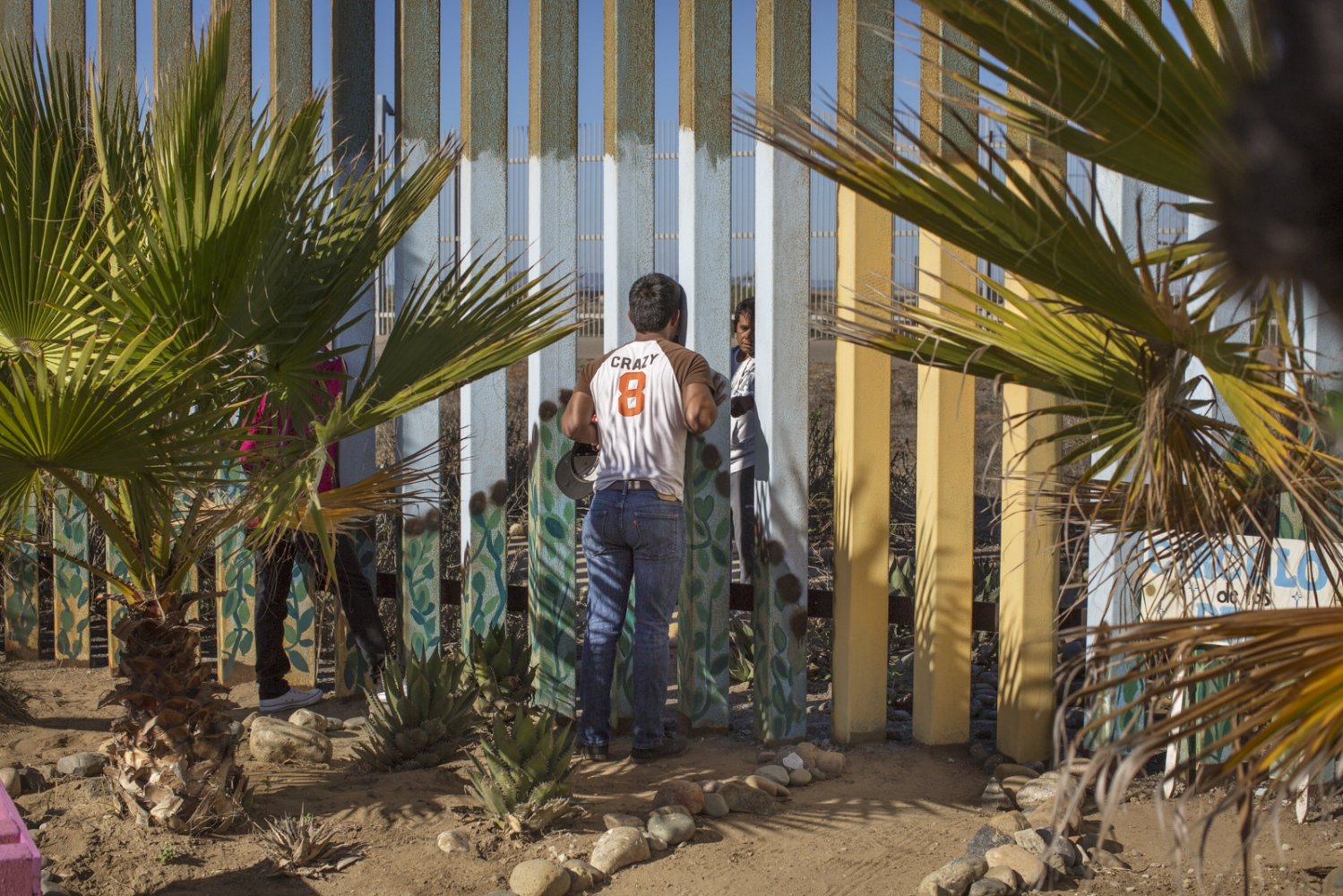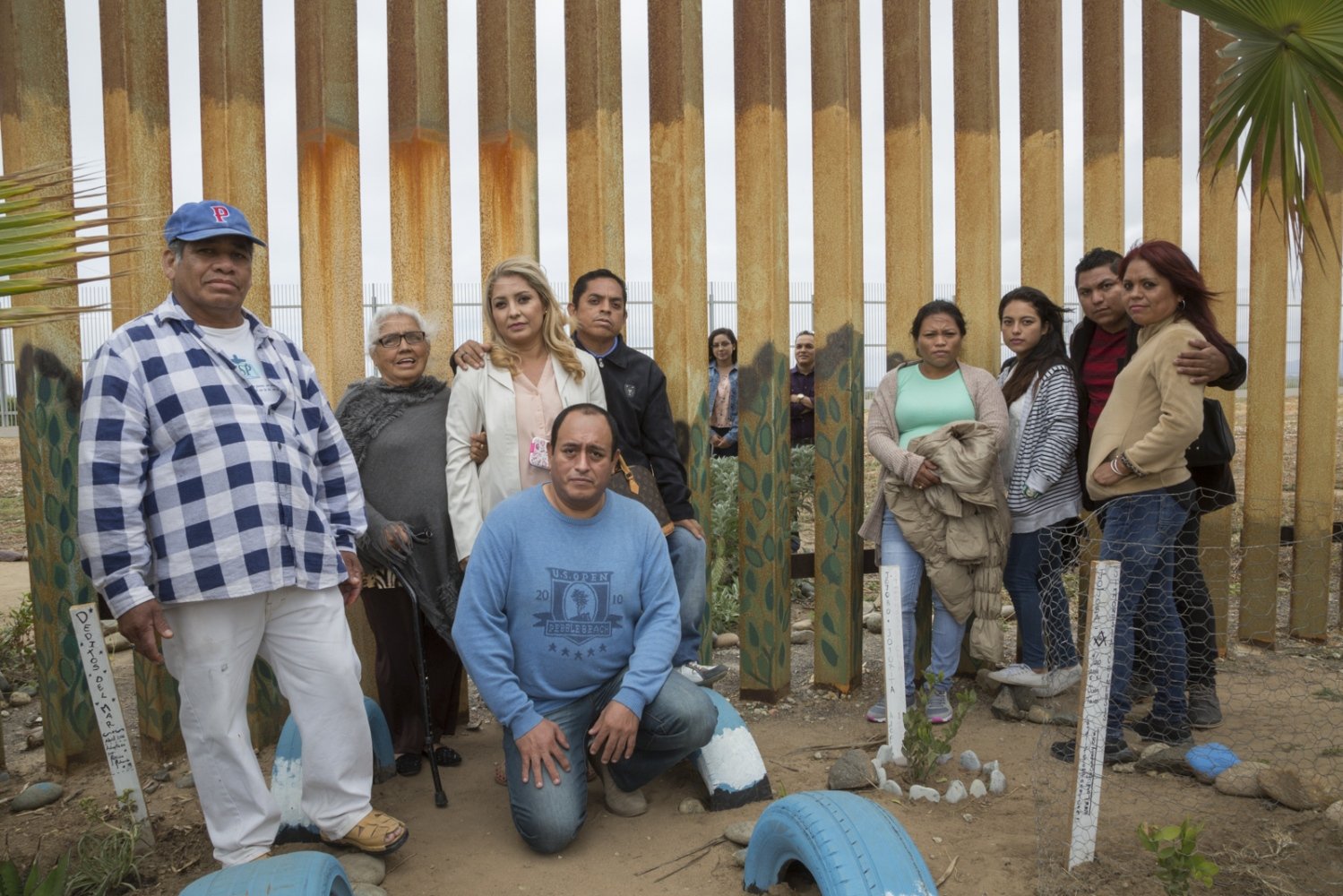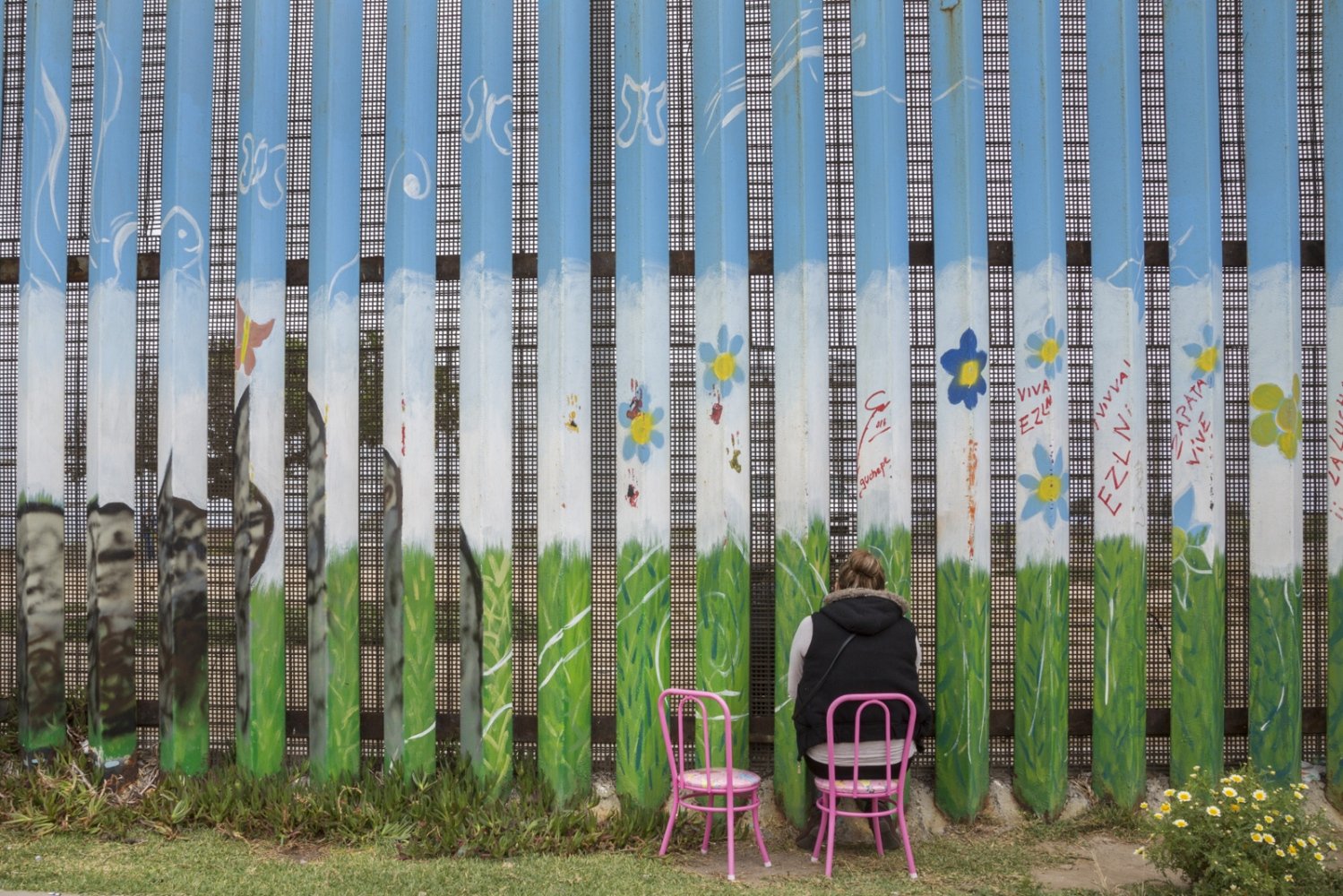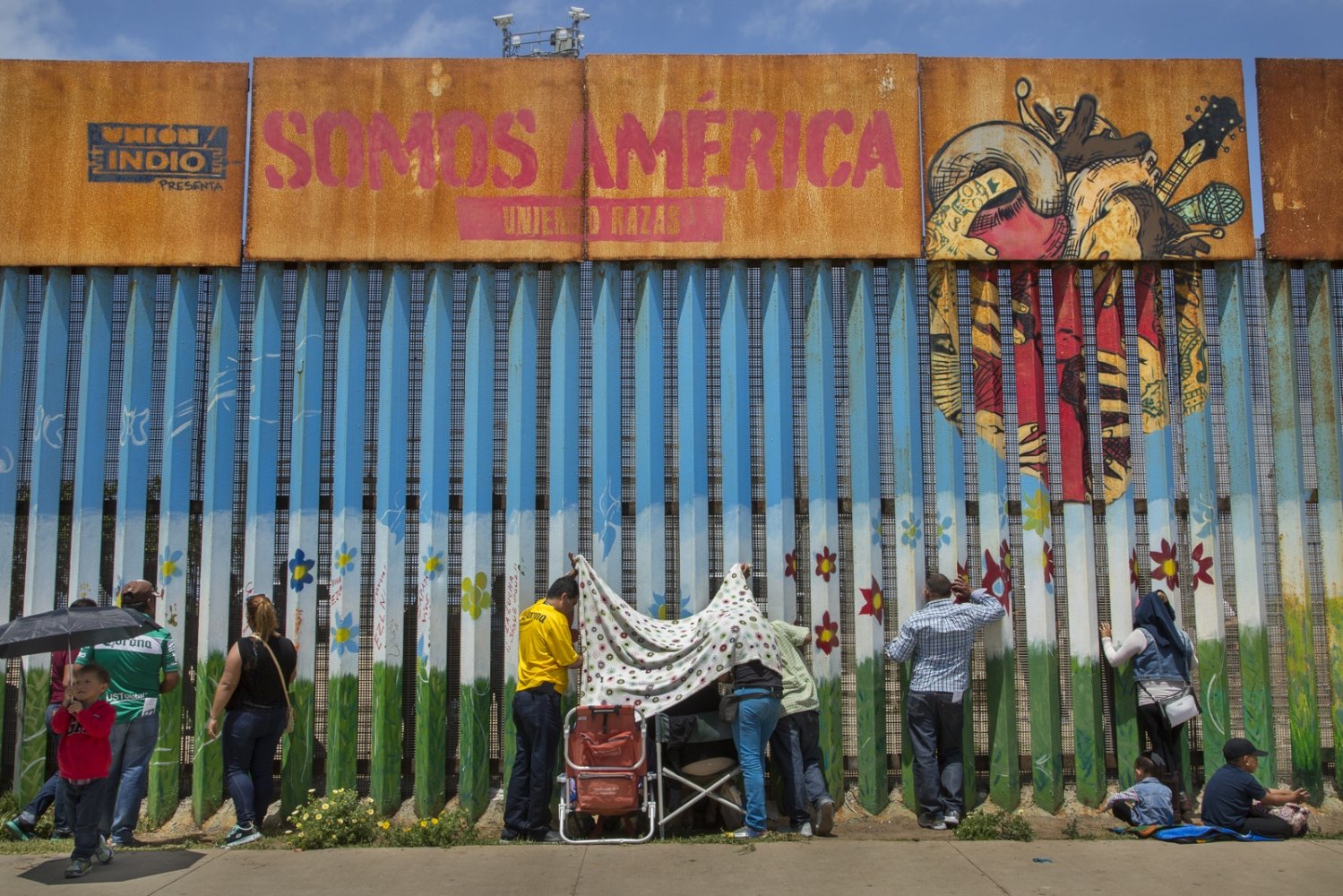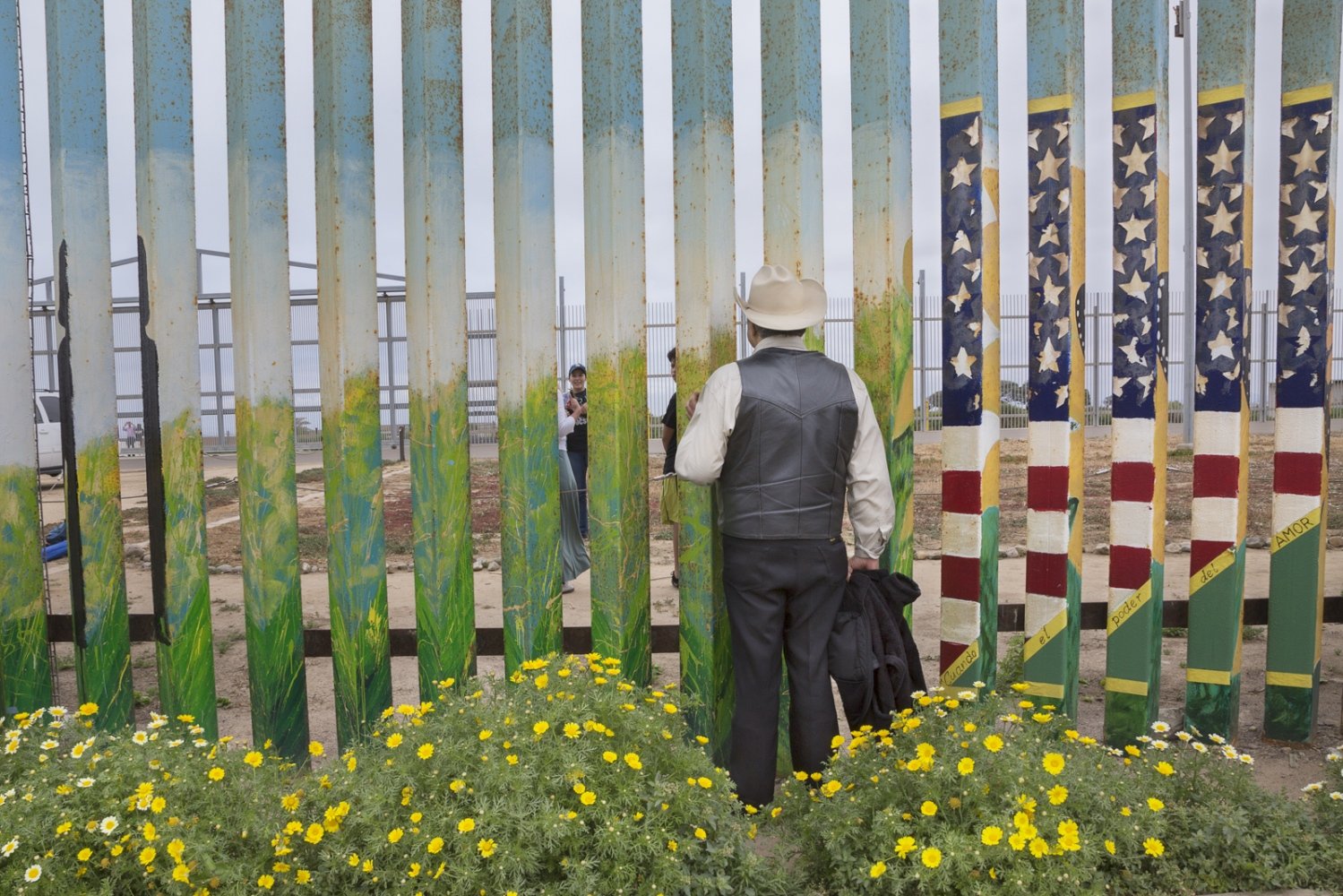The Wall is a photographic series by Griselda San Martin that documents a small, binational half-acre of land running along the border between San Diego and Tijuana. By calling attention to the human interactions at Friendship Park, where families visit with and speak with one another through a metal fence, San Martin attempts to neutralise what this wall was built to create: Separation.
It was reported by government officials that over a million migrants attempted to cross the Southern US border in 2019, with an astonishing 500,000 apprehended by US officials. The numbers of people from Latin America seeking protection in the US and being held at the border are rising daily. These people are running in fear of their own countries and they give up everything they know – their families, their friends and their whole lives, in search of a better one. In recent years, there has been a significant increase in the number of people migrating to the US because they fear persecution by gangs. While persecution is not the only reason people from Central America migrate to the US, there is evidence that suggests that it is a growing factor, and a credible one. The San Diego-Tijuana border is notoriously known to be one of the major points of entry for trafficking, and with this particular border being a main crossing for both commuters and tourists, it makes it one of the busiest meeting points between the two countries.
Friendship Park is a meeting point for families and friends alike. In this series, San Martin’s photographs capture both separation and tragedy. In a country founded on the premise of immigration, in a deeply discomfiting effort that passed through successive US governments, this man made a fence – a structure and line that has been created through a vision of made up land is where people go to touch and talk to their loved ones. In San Martins photographs you witness a sense of loneliness and separation of a life that most people can’t fathom.
San Martin explains how the series looks at how physical borders create symbolic boundaries that reinforce the rhetoric of “us versus them,” in which immigrants are seen as a threat to traditional narratives ingrained in various communities across America. Exaggerated fears of ‘invading’ migrants dominate imaginations, inspiring violence and shaping policy and this along with media bias has meant building border barriers has long been seen as an easy way of making presidential incumbents appear tough and vote-winning. With the aim of eradicating this, San Martin’s goal is to transform the discourse on border security into a conversation about immigrant visibility, addressing audiences on both sides of the wall by challenging popular assumptions or by reminding them that they are seen, heard and that they matter.
